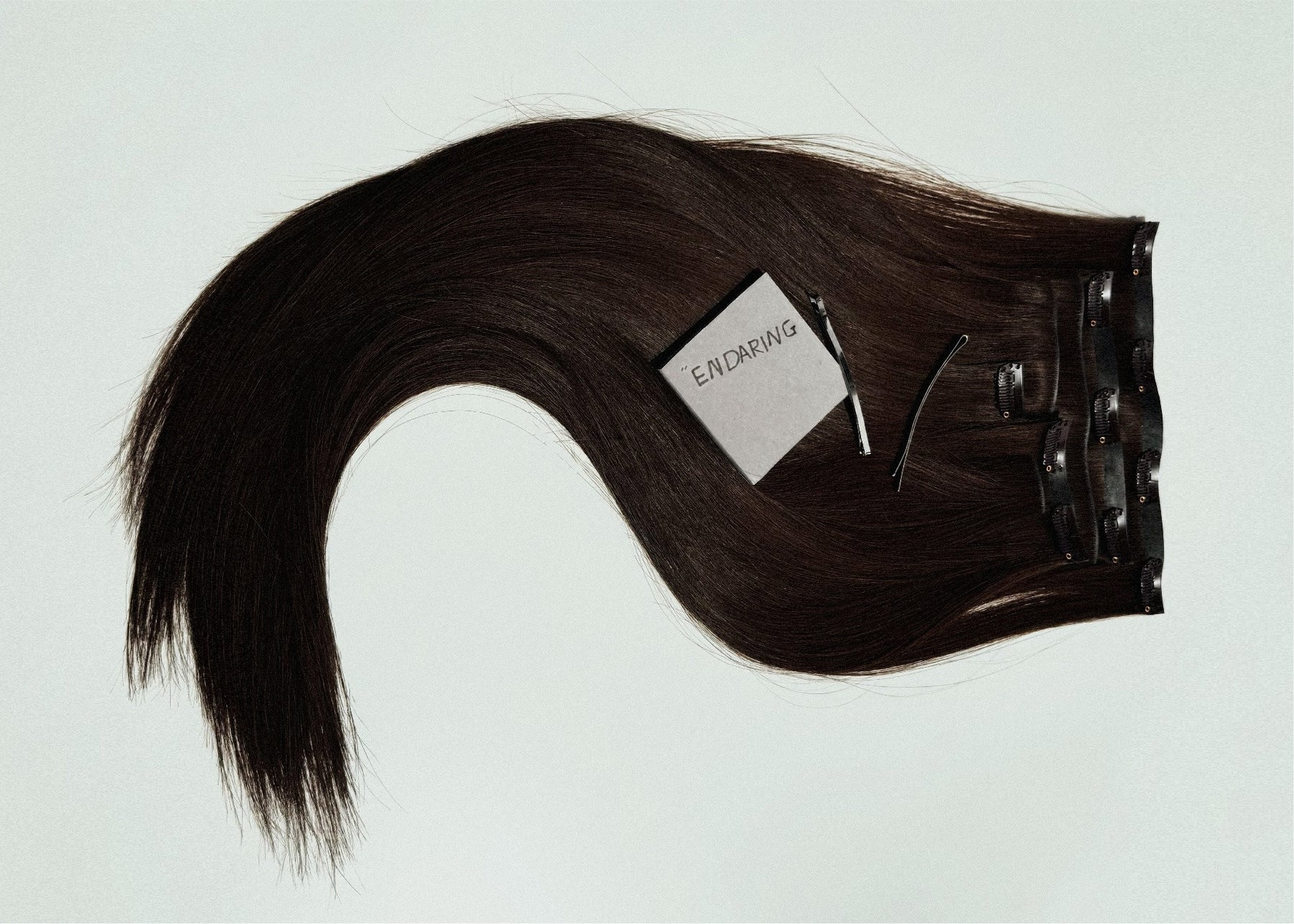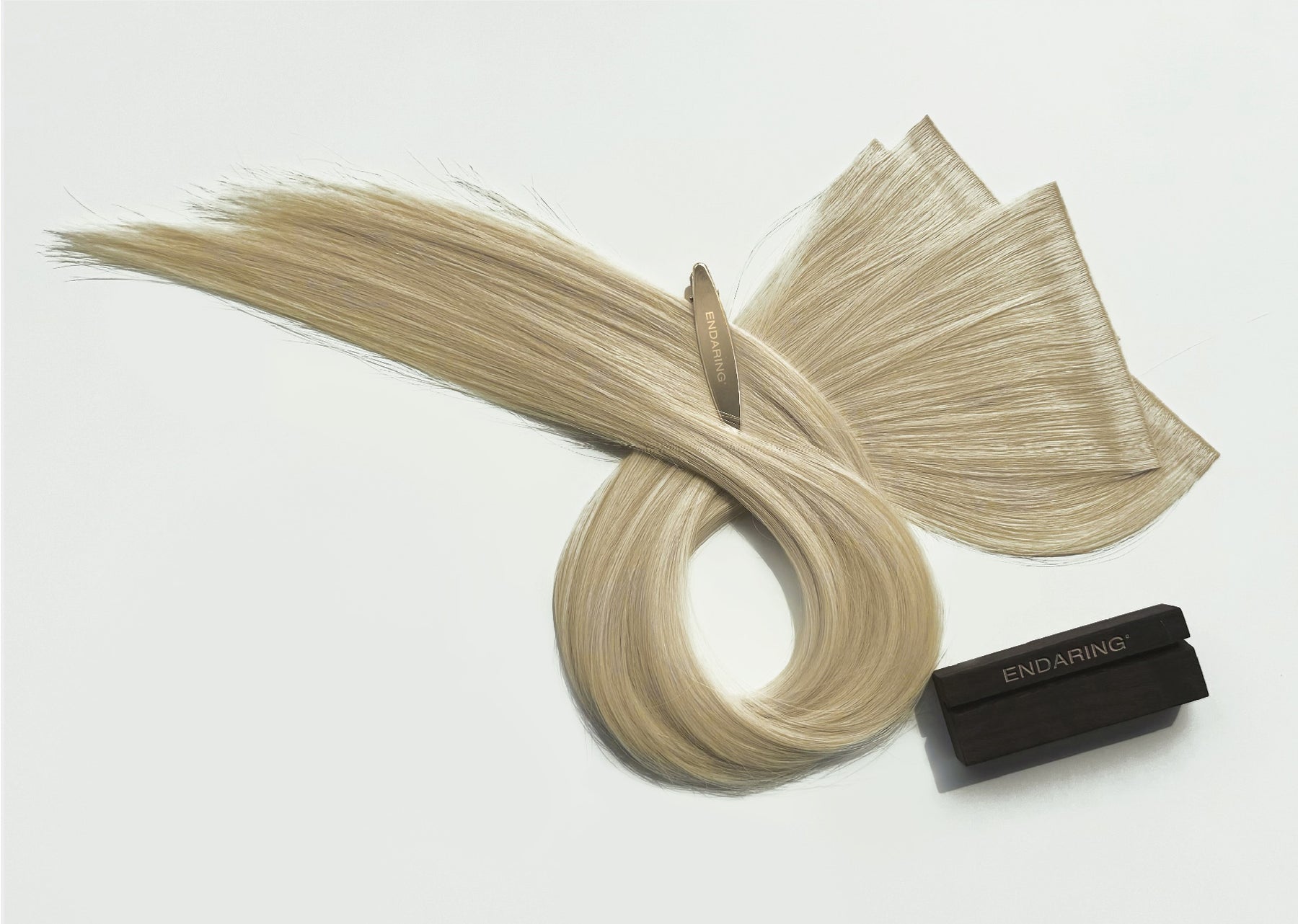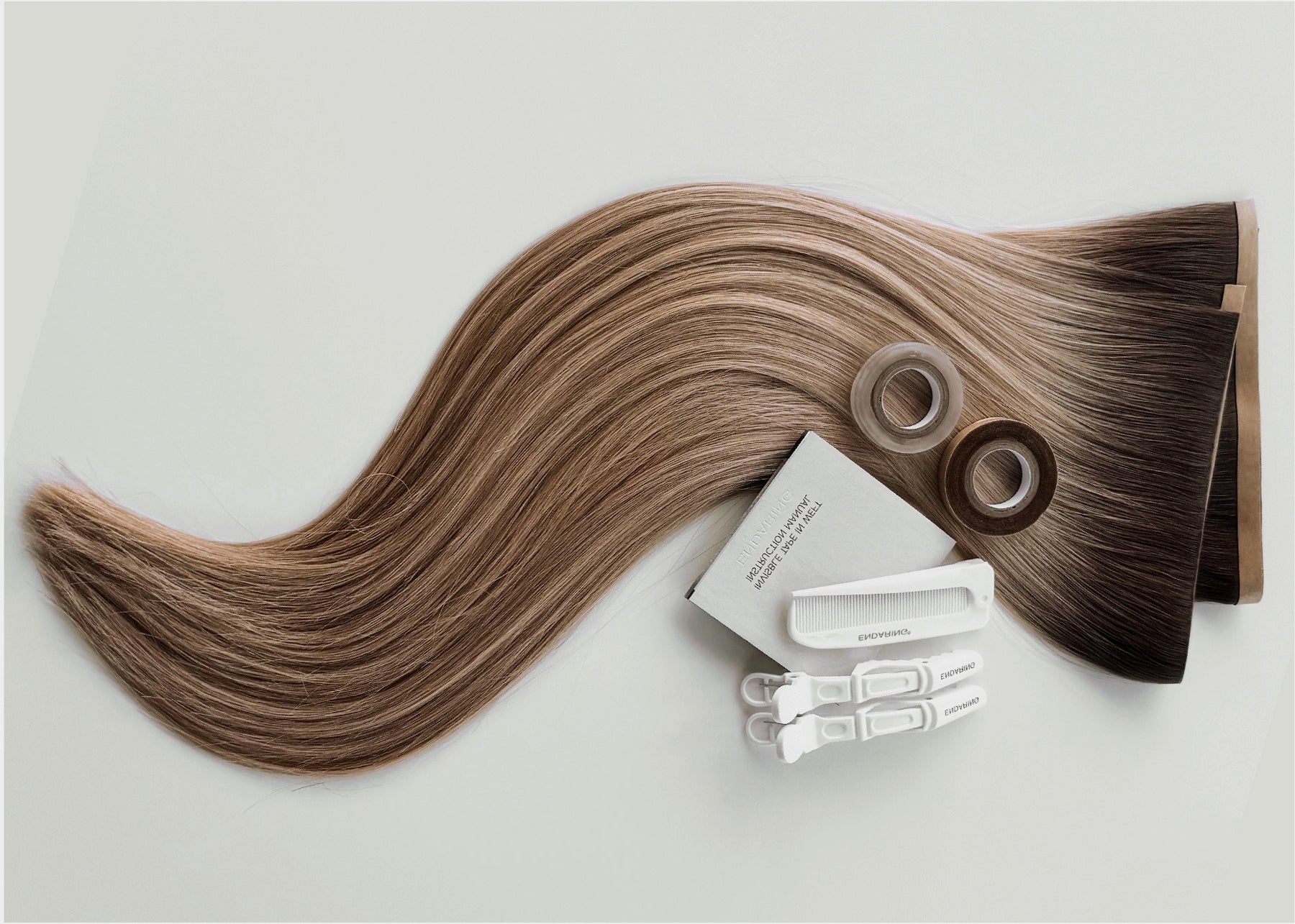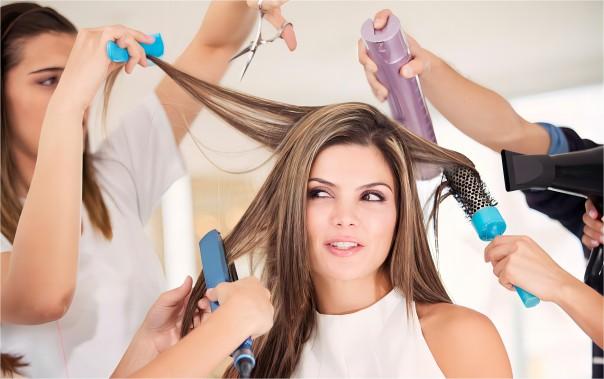The Importance of a Consistent Hair Washing Routine:

Maintaining a consistent hair-washing routine is crucial for overall hair health.
-
Removing Dirt and Impurities: When you wash your hair regularly, you effectively remove accumulated dirt, dust, and environmental impurities. These particles can settle on your scalp and hair, making it appear dull and lifeless. Over time, this buildup can also lead to clogged hair follicles, hindering healthy hair growth.
-
Eliminating Product Buildup: Hair products such as styling gels, sprays, and serums leave residue on your hair. Consistent washing helps get rid of this product buildup, which not only weighs your hair down but can also make it less responsive to styling. By cleansing your hair, you're ensuring that it remains a clean canvas for your styling products to work their magic.
-
Managing Excess Oil: Our scalps naturally produce oil (sebum) to keep our hair lubricated and healthy. However, an overproduction of sebum can result in an oily, greasy appearance. Regular hair washing helps control excess oil, preventing your hair from looking unwashed or limp. Those with oily hair types need to maintain a consistent routine to manage this issue.
-
Preventing Scalp Conditions: A consistent hair-washing routine can also help prevent common scalp conditions like dandruff, itchiness, and even more severe issues like scalp acne. These conditions can be exacerbated by an unclean scalp, so regular cleansing is essential for maintaining a healthy scalp.
-
Maintaining Freshness: Few things can boost your confidence like the feeling of fresh, clean hair. A regular hair-washing routine ensures your locks look and feel clean, giving you a more polished and put-together appearance. This freshness can have a positive impact on your overall confidence and self-esteem.
-
Long-Term Hair Vitality: Over time, the benefits of a consistent hair-washing routine extend to the long-term vitality of your hair. By removing impurities, maintaining a balanced oil level, and preventing product buildup, you're setting the stage for healthier, more resilient hair. This is especially important if you're aiming for long, strong, and beautiful locks that stand the test of time.
Factors Affecting Hair Washing Frequency:
Your ideal hair-washing frequency depends on a variety of factors. These include your hair type, daily activities, climate, and personal preferences. We'll explore these factors in detail, so you can better understand why some people might need to wash their hair more frequently while others can go longer between washes. This knowledge will help you tailor your routine to meet your specific needs.
Hair Type:-
Straight Hair:
- Characteristics: Straight hair is typically sleek and smooth. It tends to be naturally oilier because the sebum can easily travel down the hair shaft.
- Washing Frequency: Those with straight hair often need to wash every 2-3 days to manage oiliness and maintain a fresh look. Using a lightweight, sulfate-free shampoo is ideal for this hair type.
-
Curly Hair:
- Characteristics: Curly hair has a distinct texture and tends to be naturally drier. The oils from the scalp have a harder time reaching the tips due to the curls.
- Washing Frequency: People with curly hair can usually go longer between washes, typically once a week or even every 10-14 days. This allows them to retain their natural oils, which are essential for maintaining moisture.
-
Fine Hair:
- Characteristics: Fine hair has a thinner hair shaft, making it more prone to looking flat and greasy. Maintaining volume while managing oiliness is crucial.
- Washing Frequency: Those with fine hair may need to wash every 2-3 days to prevent their hair from appearing weighed down. A volumizing shampoo can help maintain body and fullness.
-
Thick Hair:
- Characteristics: Thick hair has a larger hair shaft and is more resilient against oil buildup. It often appears fuller.
- Washing Frequency: People with thick hair can typically go 3-4 days between washes. Their hair can withstand longer intervals without looking greasy.
-
Coiled or Kinky Hair:
- Characteristics: Coiled or kinky hair is known for its tight curls and is naturally drier because the oils have a difficult time traveling down the hair shaft.
- Washing Frequency: Those with coiled or kinky hair can often extend the time between washes, typically once a week or even every 10-14 days. Co-washing (using conditioner to cleanse) can be beneficial for retaining moisture.
Daily Activities:Active Lifestyle: If you're physically active and sweat regularly, you might need to wash your hair more often. Sweat can mix with oil and create an environment that's prone to odor and scalp issues. In such cases, washing after a sweaty workout or intense activity can be beneficial.
Desk Job: If you have a more sedentary job and don't engage in vigorous physical activities, you can usually extend the time between washes.
Climate:Humid Climate: In humid regions, excess moisture in the air can make your hair feel oilier, leading to more frequent washing. People in humid climates may need to wash their hair every 2-3 days.
Dry Climate: In contrast, dry climates can suck the moisture out of your hair, potentially allowing you to go longer between washes without feeling greasy.
Personal Preferences:Texture and Feel: Some individuals simply prefer the feel of freshly washed hair. If this is you, your personal preference might lead you to wash more often than necessary.
Experimentation: Hair care is personal, and you might need to experiment to find your sweet spot. You can adjust your washing frequency based on how your hair responds to different schedules. Trial and error can help you determine the best routine for your unique needs.
Health Considerations:
Scalp Conditions: Individuals with specific scalp conditions, such as seborrheic dermatitis, may require more frequent washing to manage their condition effectively. On the other hand, some conditions may benefit from less frequent washing to prevent irritation.
3. Balancing Oily and Dry Hair: Tailoring Your Schedule:
Finding the right balance between washing your hair and preserving its natural oils is essential.
Certainly, let's break down the details of balancing oily and dry hair and tailoring your hair-washing schedule to your specific needs:
-
Oily Hair:
Causes of Oiliness: Oily hair often results from an overproduction of sebum by the sebaceous glands in your scalp. This can be influenced by genetics, hormonal factors, and diet.
Washing Frequency: If you have oily hair, you may need to wash it more often, typically every other day or even daily. Frequent washing helps control the buildup of excess oil and prevents your hair from looking greasy.
Choosing the Right Shampoo: Opt for a clarifying or oil-control shampoo to effectively manage oiliness. Look for products that are sulfate-free and designed for your hair type to prevent over-drying.
-
Dry Hair:
Causes of Dryness: Dry hair can be the result of factors like genetics, environmental conditions, and excessive heat styling. It occurs when your hair lacks the natural oils it needs to stay moisturized.
Washing Frequency: If your hair is on the drier side, you'll want to avoid frequent washing, typically limiting it to once or twice a week. This allows your hair to retain its natural oils, preventing it from becoming brittle and prone to breakage.
Moisturizing Shampoos and Conditioners: Choose hydrating and nourishing shampoos and conditioners. These products help replenish moisture and protect your hair from further dryness.
-
Finding the Balance:
Transitional Period: If you're transitioning from frequent washing to a less frequent schedule or vice versa, your hair may need an adjustment period. During this transition, you might experience some oiliness or dryness as your scalp adapts.
Dry Shampoo: Dry shampoo can be a helpful tool to extend the time between washes for both oily and dry hair types. It can absorb excess oil while providing volume to your hair.
-
Personalized Approach:
Observing Your Hair: Pay close attention to how your hair responds to your washing schedule. Everyone's hair is unique, and what works for one person may not work for another.
Experimentation: Don't be afraid to experiment with different schedules until you find the right balance. It may take some trial and error, but it's worth it to maintain healthy and beautiful hair.
Tips for Prolonging Time Between Hair Washes:
Some days, it's just not practical to wash your hair daily. That's where these tips come in handy.
Dry Shampoo:
Application: Dry shampoo is your go-to product for extending the time between washes. Apply it to your roots and other oily areas, let it sit for a few minutes, and then comb or brush it through your hair to absorb excess oil.
Types: Dry shampoos come in various forms, including sprays, powders, and foams. Experiment to find the one that works best for your hair type and personal preference.
Hairstyles that Conceal Oil:
Braids: Braids are an excellent option to hide greasy roots. They not only keep your hair looking neat but also add a touch of elegance to your appearance.
Ponytails: A high or low ponytail can also work wonders in concealing oily hair. Pull your hair back and secure it with a hair tie for a polished look.
Hair Accessories:
Headbands: Stylish headbands or hairbands can keep your hair off your face and disguise any oiliness near your scalp.
Scarves: Tying a scarf around your head or incorporating it into your hairstyle can be a fashionable way to cover up unwashed hair.
Overnight Hair Care:
Braiding: Before bedtime, braid your hair to prevent it from getting tangled or too oily while you sleep. In the morning, you can undo the braid to reveal natural waves.
Silk Pillowcase: Consider using a silk pillowcase to reduce friction and minimize oil transfer from your hair to your bedding.
Adjusting Your Part:
Change Your Part: Sometimes simply changing your hair part can help distribute oils differently, making your hair appear less greasy.
Zigzag Part: A zigzag part can be a creative way to disguise oil at the roots.
Avoid Excessive Touching:
Hands Off: Try to avoid touching your hair throughout the day. The natural oils on your fingers can transfer to your hair, making it greasier.
Use the Right Hair Accessories:
Hair Clips and Pins: Secure your hair with clips and pins to keep it off your face and maintain a neat appearance.
Refreshing Mist:
DIY Hair Mist: Create a DIY hair mist using water and a few drops of essential oil (like lavender or rosemary). Spritz it lightly on your hair to refresh and add a pleasant scent.
How Often Should You Wash Colored or Treated Hair?
Colored or chemically treated hair requires special care to maintain its vibrancy and health.
Certainly, let's explore the specific details of how to care for colored or treated hair, including how often to wash it and best practices to preserve its beauty:
-
Washing Frequency for Colored or Treated Hair:
- Frequency: For colored or chemically treated hair, it's generally recommended to wash less frequently. Washing every 2-3 days or even once a week can help maintain the color and prevent fading.
- Cold Water Rinse: After washing, finish with a cold water rinse to seal the cuticle and lock in the color.
-
Shampoo and Conditioner Selection:
- Color-Safe Products: Opt for shampoos and conditioners specifically designed for colored or treated hair. These products are formulated to be gentle and to preserve your hair's color and health.
-Sulfate-Free Shampoo: Choose sulfate-free shampoos, as sulfates can strip color-treated hair. Look for products labeled as "color-safe".
-
Avoiding Hot Water:
- Temperature: Hot water can strip the color from your hair, so use lukewarm or cool water when washing. This helps maintain the vibrancy of your color.
-
Dry Shampoo Usage:
- Extend Time Between Washes: Dry shampoo can be a valuable tool to extend the time between washes for colored hair. It absorbs excess oil and keeps your hair looking fresh without overwashing.
-
UV Protection:
- Sun Protection: Colored hair can be sensitive to UV rays, which can cause color fading. Use hair products with UV protection or wear a hat when exposed to direct sunlight.
-
Deep Conditioning Treatments:
- Moisture Restoration: Periodic deep conditioning treatments help restore moisture to colored or treated hair, which can become dry. These treatments can be done weekly or as needed, depending on the condition of your hair.
-
Avoid Chlorine and Saltwater:
- Protection: Chlorine in swimming pools and saltwater at the beach can strip hair color. Protect your hair by wearing a swim cap or applying a leave-in conditioner before swimming.
-
Limit Heat Styling:
- Heat Protection: Use heat protectant products when using styling tools to prevent heat damage and further color fading.
-
Professional Maintenance:
- Salon Touch-Ups: Schedule regular touch-up appointments at the salon to maintain your hair color's vibrancy and address any fading or regrowth.
-
Avoid Overwashing: Colored or treated hair is more vulnerable to damage, and frequent washing can exacerbate this. Avoid overwashing to prevent dryness and color fading.
Overwashing vs. Underwashing: Finding the Goldilocks Zone:
Striking the right balance between overwashing and underwashing is key to maintaining healthy, beautiful hair.
-
Consequences of Overwashing:
- Dryness and Damage: Overwashing can strip your hair of its natural oils, leading to dryness and potential damage. It can result in brittle, frizzy hair and even split ends.
- Scalp Issues: Frequent washing can lead to scalp dryness and itching, as the natural oils that protect the scalp are continuously removed.
- Color Fading: If you have colored or treated hair, overwashing can cause your hair color to fade more quickly, diminishing its vibrancy and shine.
-
Drawbacks of Underwashing:
- Oil Buildup and Greasiness: When you underwash your hair, oils, and sebum accumulate on your scalp and hair, making your hair appear greasy, flat, and unclean.
- Odor: The combination of sweat, oil, and environmental pollutants can create an unpleasant odor, making your hair unattractive.
- Scalp Issues: Underwashing can lead to common scalp issues like dandruff and itching due to the buildup of oils and impurities.
-
Finding the Goldilocks Zone:
- Observation: Determining the ideal washing frequency depends on factors such as your hair type, lifestyle, and personal preferences. You need to observe how your hair responds to different washing schedules.
- Experimentation: Don't be afraid to experiment with different routines to find your "Goldilocks Zone." Try adjusting your washing frequency and products until you strike the right balance.
- Transitional Period: If you're transitioning from overwashing to a more balanced routine or vice versa, expect an adjustment period. Your hair may take some time to adapt to the new schedule.
Common Mistakes to Avoid When Washing Your Hair:
To wrap up our discussion, we'll highlight some common mistakes people make when washing their hair.
Certainly, let's delve into the specific details of common mistakes to avoid when washing your hair and how to rectify them for an effective hair-washing routine:
-
Using Water That's Too Hot:
- Mistake: Hot water can strip your hair of its natural oils, leading to dryness and potential damage.
- Solution: Use lukewarm water to open the hair cuticle and allow for effective cleansing. Finish with a cool rinse to seal the cuticle and add shine.
-
Scrubbing Too Vigorously:
- Mistake: Aggressively scrubbing your scalp can damage hair follicles and lead to breakage.
- Solution: Massage your scalp gently with your fingertips in a circular motion. Use mild pressure to avoid unnecessary friction.
-
Using the Wrong Products:
- Mistake: Using shampoos and conditioners that don't match your hair type can lead to issues like dryness, oiliness, or inadequate moisture.
- Solution: Choose products specifically designed for your hair type. Read labels to ensure they are free from harmful ingredients like sulfates, parabens, and silicones.
-
Overusing Styling Products:
- Mistake: Using too many styling products can lead to product buildup and make your hair appear greasy.
- Solution: Use styling products in moderation and consider using a clarifying shampoo occasionally to remove residue.
-
Rinsing Insufficiently:
- Mistake: Inadequate rinsing can leave product or shampoo residue, making your hair look dull and lifeless.
- Solution: Ensure thorough rinsing by allowing the water to flow through your hair until it runs clear. Pay special attention to the scalp and roots.
-
Frequent Heat Styling:
- Mistake: Frequent use of heat styling tools like flat irons and curling irons can damage your hair over time.
- Solution: Minimize heat styling by using heat protectant products and exploring heatless styling options to protect your hair.
-
Neglecting Scalp Care:
- Mistake: Many people focus on their hair but neglect their scalp, which is vital for overall hair health.
- Solution: Incorporate scalp care into your routine, such as occasional scalp massages and using products designed to nourish the scalp.
-
Ignoring the Conditioner:
- Mistake: Some people skip or rush through the conditioning step, missing out on its benefits.
- Solution: Take your time to apply and rinse out the conditioner, paying special attention to the mid-lengths and ends.





